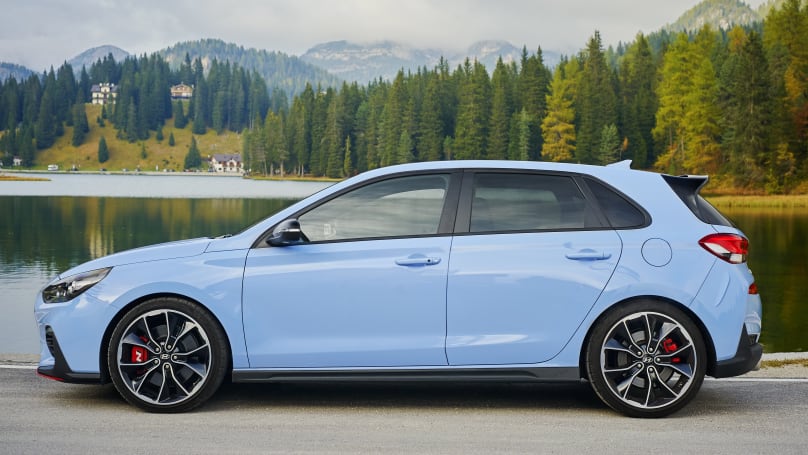The fog hangs heavy over Austria's mighty Grossglockner mountain; an impenetrable woollen blanket so thick and dense it doesn’t so much obscure your vision as it does completely obliterate it. And around these parts, vision is important. European mountains aren’t like the speed bumps we ski down in Australia, and the Glossglockner High Alpine Road is just that; very, very high.
The sensuously smooth tarmac climbs more than 2500 metres from the postcard-perfect village of Lienz, past wide and snow-white fields, up through a prehistoric hill climb section known colloquially known as the 'village of eternal ice', and all the way to the frost-bitten peaks.
See our Hyundai i30N 2017 review
See our Hyundai i30 2017 review
In summer, the views are said to be life-changing. But here and now, on the cusp of a European winter, this endless fog means you can’t just not see the The Sound of Music landscape, but you also can’t see oncoming traffic, the edges of the road or the impossibly steep (and almost certainly fatal) drop back to ground level. So more life-ending than life-changing, then.

It’s the adult equivalent of building one of Donald Trump’s fences around Disneyland, or finding out the reason Jeff can't wake up is because he's been shot in the face: one of the world’s finest driving roads is at our disposal, but it's hidden just beyond our reaching grasp behind this impenetrable fog. As a result, speeds are limited to about 30km/h (and even that feels too fast) and tempers are fraying at the sheer unfairness of it all.
Still, it at least gives us some time to explain what we're doing here. See, we’re not piloting what you might traditionally consider one of the go-to cars for this kind of road. Ours is not a RenaultSport, and it’s not an RS. There’s no GTI or R badging either, and nor is has it rumbled straight out of Stuttgart. Nope, we’re driving a Hyundai hatchback; an i30.

And yes, there was a time - and quite recently - when travelling all the way to Europe to tackle one of the world’s greatest roads in a Korean hatchback would have been like taking an automotive Ambien, and would have had you, dear reader, hurriedly searching for something less boring to consume on the internet.
But this is no ordinary i30...





Comments